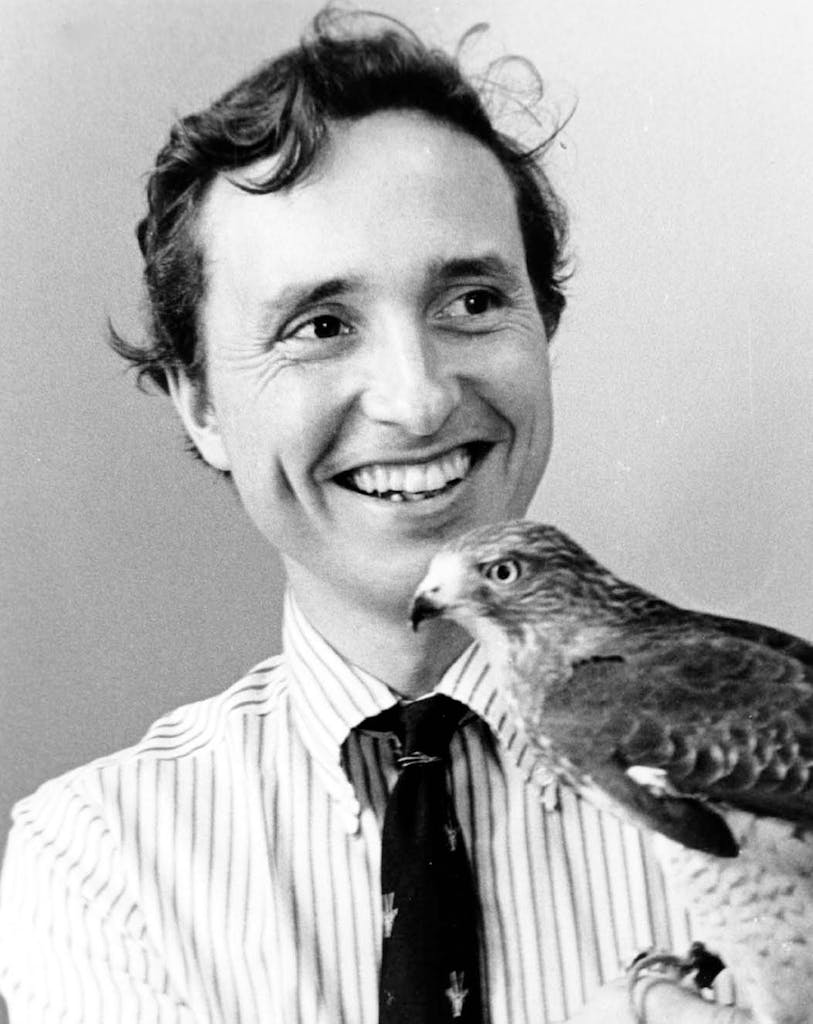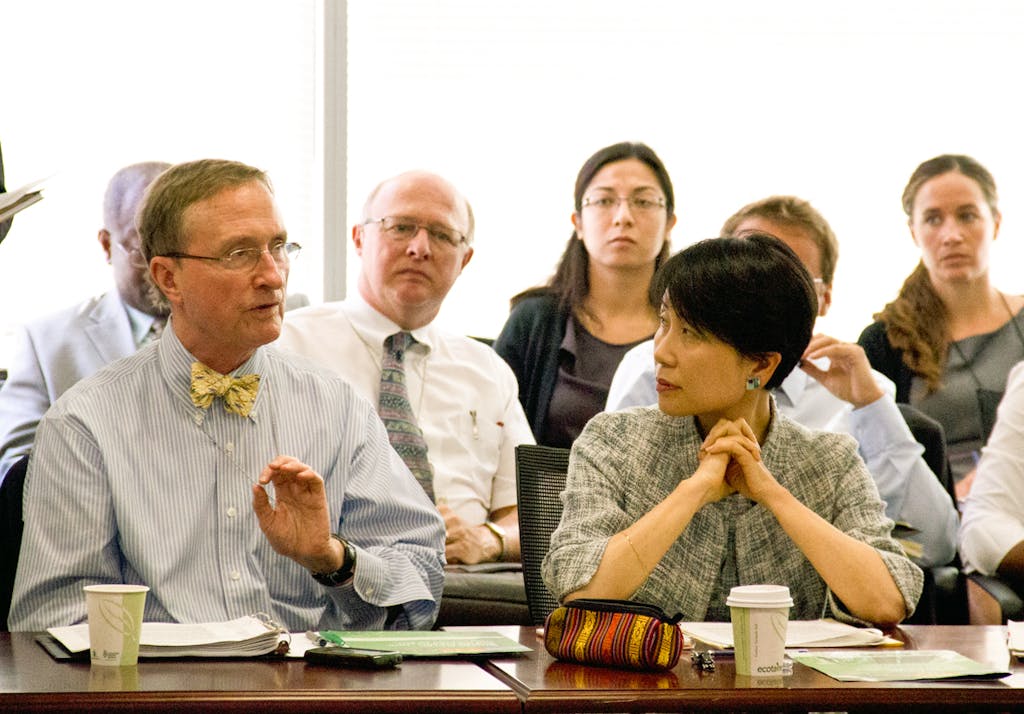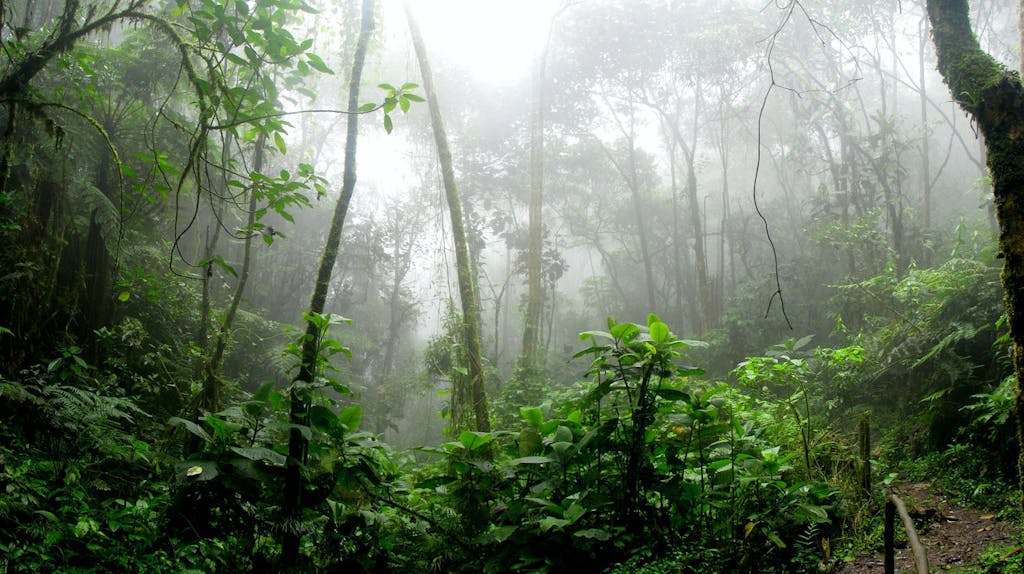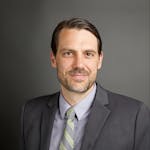This winter, the world lost a legend in the field of conservation biology. Dr. Thomas Lovejoy, a world-renowned ecologist known as the “godfather of biodiversity,” died at his home on Christmas Day at the age of 80. At the United Nations Foundation, where he worked as a Senior Fellow, we’re celebrating his life by sharing highlights and insights from his incredible career.
It is hard to overstate Dr. Lovejoy’s impact. In many ways, he created the field of conservation biology, popularizing the term “biological diversity” while bringing global attention to the costs of deforestation and habitat fragmentation in the Amazon rainforest.
A natural-born guide and storyteller, he welcomed scores of fellow scientists, journalists, politicians, and celebrities to Camp 41, a ramshackle research base he founded in Brazil, in the heart of the Amazon, so they could see firsthand what was at stake in the world’s largest and most diverse rainforest.

Dr. Lovejoy with a hawk in 1974. Photo: Jerry Freilich /Wikimedia Commons
A Lasting Legacy for the Godfather of Biodiversity
At the United Nations Foundation, where he served as Senior Fellow, Dr. Lovejoy earned a beloved reputation for his humility and warmth. The door to his office — filled to the brim with stacks of papers and books — was always open.
Recalling her own visit to Camp 41 with Dr. Lovejoy, the UN Foundation’s President and CEO, Elizabeth Cousens, said his love of the planet’s wondrous diversity was infectious. “He was a true force of nature. He inspired young researchers and world leaders alike with an extraordinary mind matched only by his kindness and generosity of spirit,” she said.
By pioneering a new way of looking at the planet’s living creatures as an interconnected whole, Dr. Lovejoy transformed the way all of us see the world, our future, and the fight against climate change. Below are just a few of our favorite bits of wisdom from a colleague and mentor whose legacy lives on.
Lessons from Dr. Lovejoy
Just two months before his death, Dr. Lovejoy wrote an essay in The New York Times with economist John Reid about protecting intact forestland, especially in Canada, Russia, Brazil, the Congo, Peru, and the U.S., as a way of tackling climate change:
“We’re losing a battle we can win, but only by keeping trees on our side.
“As has become starkly clear, humans have the means to bake the biosphere we live in. Avoiding that outcome is more than a matter of adjusting the dials of our technologies and fuels. Finding our way through the climate crisis also requires that we remember how our home planet works — as a linked biological and physical system with a beating, photosynthesizing, rainmaking heart of wild woods.”
In 1984, in one of the first of many op-eds published in The New York Times, Dr. Lovejoy invented a policy mechanism known as “debt-for-nature swaps,” in which developing economies could pay off foreign debt through investments in conservation. Since then, billions of dollars in funding have been directed toward environmental protection through this approach. In the Times op-ed, he wrote:
“The international debt crisis should remind us of the ecological as well as the economic links between rich and poor. For among the hidden casualties of that crisis are the fragile natural environments of the developing countries.
“What is at stake here is more than the preservation of exotic species for the amusement of tourists. Proper management of tropical landscapes is critical to the survival of the variety of life on earth and its potential for human welfare.”

Thomas Lovejoy and Global Environment Facility CEO Naoko Ishii present at the 2012 STAP Annual meeting. Photo: Global Environment Facility
While world leaders prepared to launch the Sustainable Development Goals in 2015, Dr. Lovejoy reminded policymakers and citizens alike to remember the intrinsic value of all species, as well as their potential uses in the future:
“Whoever would have thought a bacterium from a Yellowstone hot spring would revolutionize forensic and diagnostic medicine, make the human genome project possible, and confer benefits in the trillion dollar range?
“Each species represents a set of solutions — pretested by evolution — to a particular set of biological problems. All of them have the potential to make substantial contributions to a sustainable future. The more we can substitute biological processes for toxic non-biological ones, the more benign — and renewable — human and industrial activities can become.
“The more biologically diverse the planet, the more options we have for a rich and sustainable future.”
A Champion for the Amazon
When Dr. Lovejoy hosted a Christian Science Monitor journalist at Camp 41 in 2018, he talked about the Amazon’s vital role in storing carbon, how it boasts the largest terrestrial repository of biodiversity on the planet, and how it shapes the global hydrological cycle; the rainforest generates half of its own rainfall, and one-fifth of the world’s rivers flow into the Amazon River basin.
During the reporter’s visit, Dr. Lovejoy also warned about the Amazon’s potential collapse, saying the tipping point for irreversible damage could be nearer than we realize:
“Nobody knew at the time of the Dust Bowl that those last trees they were cutting would push them over the edge.”

A corner of the Amazon rainforest in San Antonio Del Tequendama, Colombia. Photo:
David Riaño Cortés / Pexels
In an interview with one of Brazil’s leading research institutes, Dr. Lovejoy reflected on 50 years of research in the Amazon, sharing what led him there and how the region has changed since his first visit:
“In 1965, there was only one highway in the entire Amazon — that’s equivalent to the 48 contiguous United States. … Now there are hundreds of thousands of roads and highways, and the Amazon is probably about 20% deforested and it’s an ongoing saga.
“But what was not as apparent to the public is the positive side of the conservation ledger. In 1965, there was only one national park in the entire Amazon, and it was in Venezuela. And there was one national forest, which was in Brazil …
“Today, more than 50% of the Amazon is under some form of protection. It’s an extraordinary accomplishment that we never would have dreamed possible. But the story is not over, right?”
After all UN Member States adopted the Paris Climate Agreement, the world’s first legally binding international treaty on climate change, Dr. Lovejoy shared his perspective with The Washington Post, saying:
“Seventy percent of the world’s remaining forests are within one kilometer of a road, which is a measure of how advanced fragmentation is…
“It’s a precarious point. And you know, the obvious thing is, you don’t want to find out where the tipping point is by tipping it…
“Happily, forests are now part of the way the whole climate agenda is put together.”
Building A better Planet for All Species
During a storytelling expedition as part of the Planet Forward program, Dr. Lovejoy led 15 journalism students on a tour of Camp 41, where they explored the surrounding rainforest during the daytime and slept in hammocks beneath the forest canopy at night.
In a video interview during the trip, he explained his philosophy and mission:
“It’s not just about science here. It’s also about building the next generation of scientists. There is no better classroom than the reality of being in the heart of a living planet.”
“Let’s stop thinking of nature as some little patch of protected area in the middle of a human-dominated system. Let’s start thinking about human aspiration embedded in those natural landscapes.
When he received the prestigious Blue Planet Prize at the UN Conference on Sustainable Development in 2012, Dr. Lovejoy delivered an acceptance speech that illustrated his passion for protecting the environment and all of its inhabitants:
“I accept this on behalf of, and in deference to, the diversity of life in all its wondrous glory: every living thing — plant, animal, and microorganism. We are all related, and each the product of four billion years of evolution. Together we constitute the living part of the planet — what science calls the biosphere.
“Collectively, we are why the Earth functions as a living planet — the one we call our home.”









